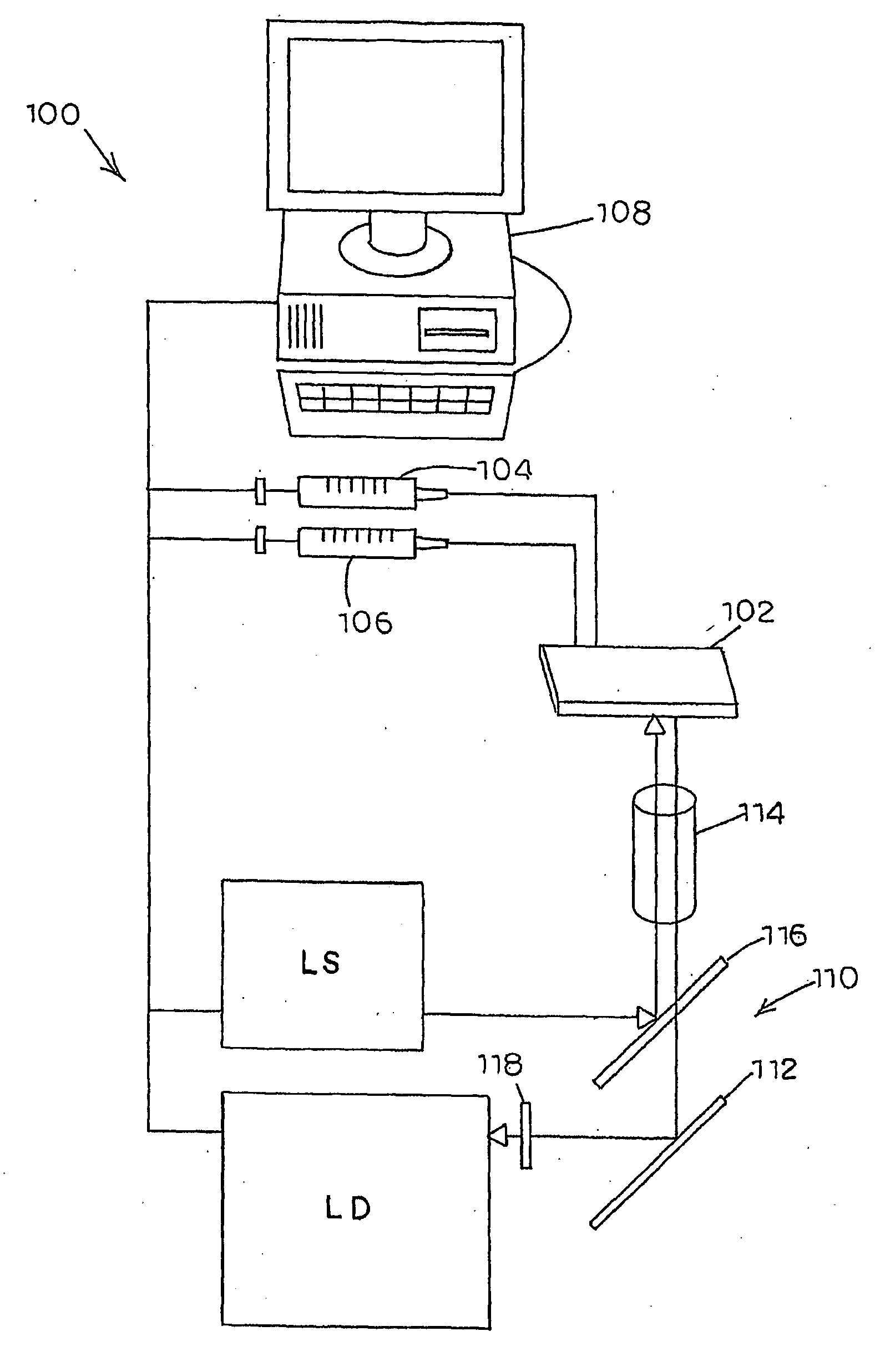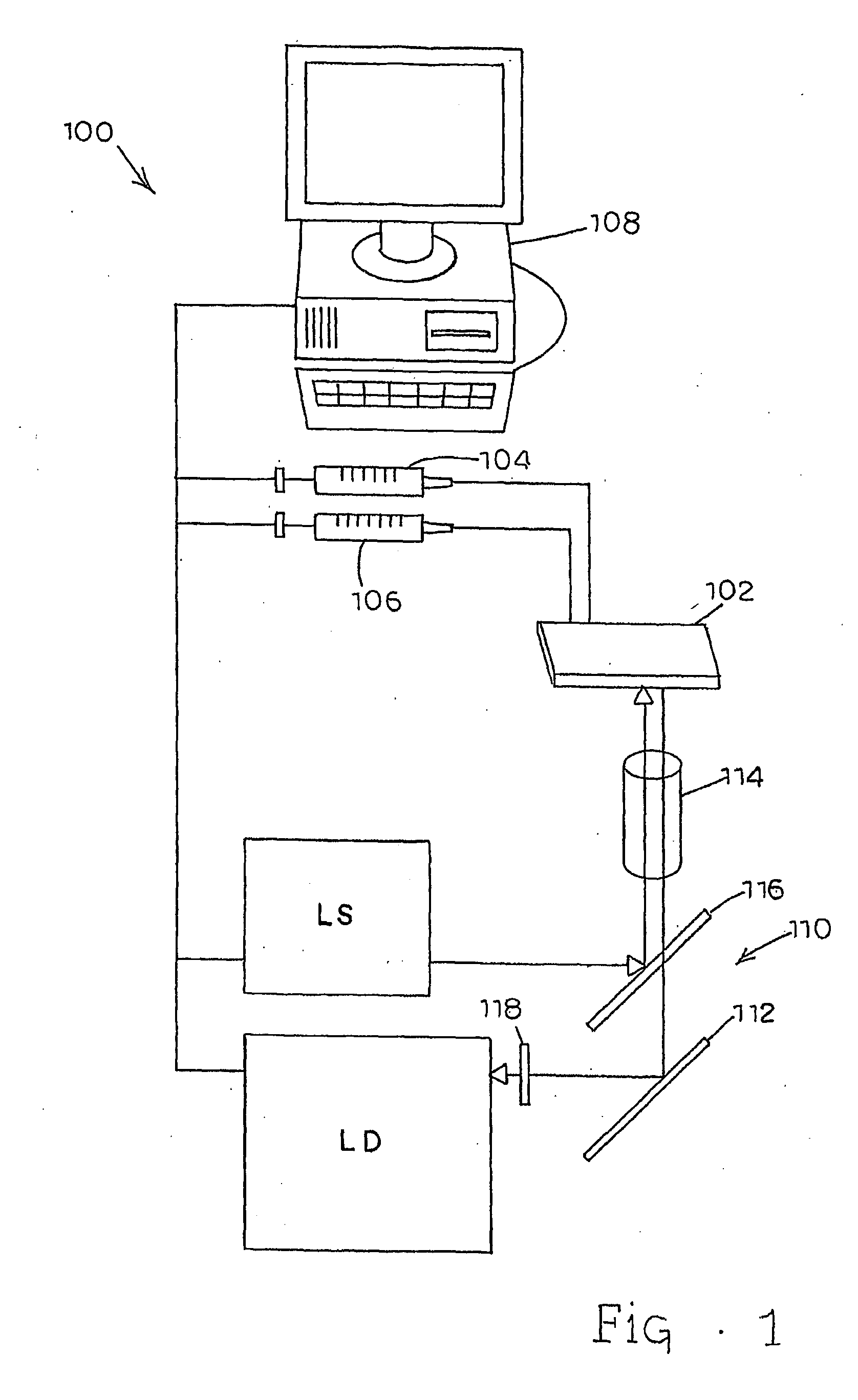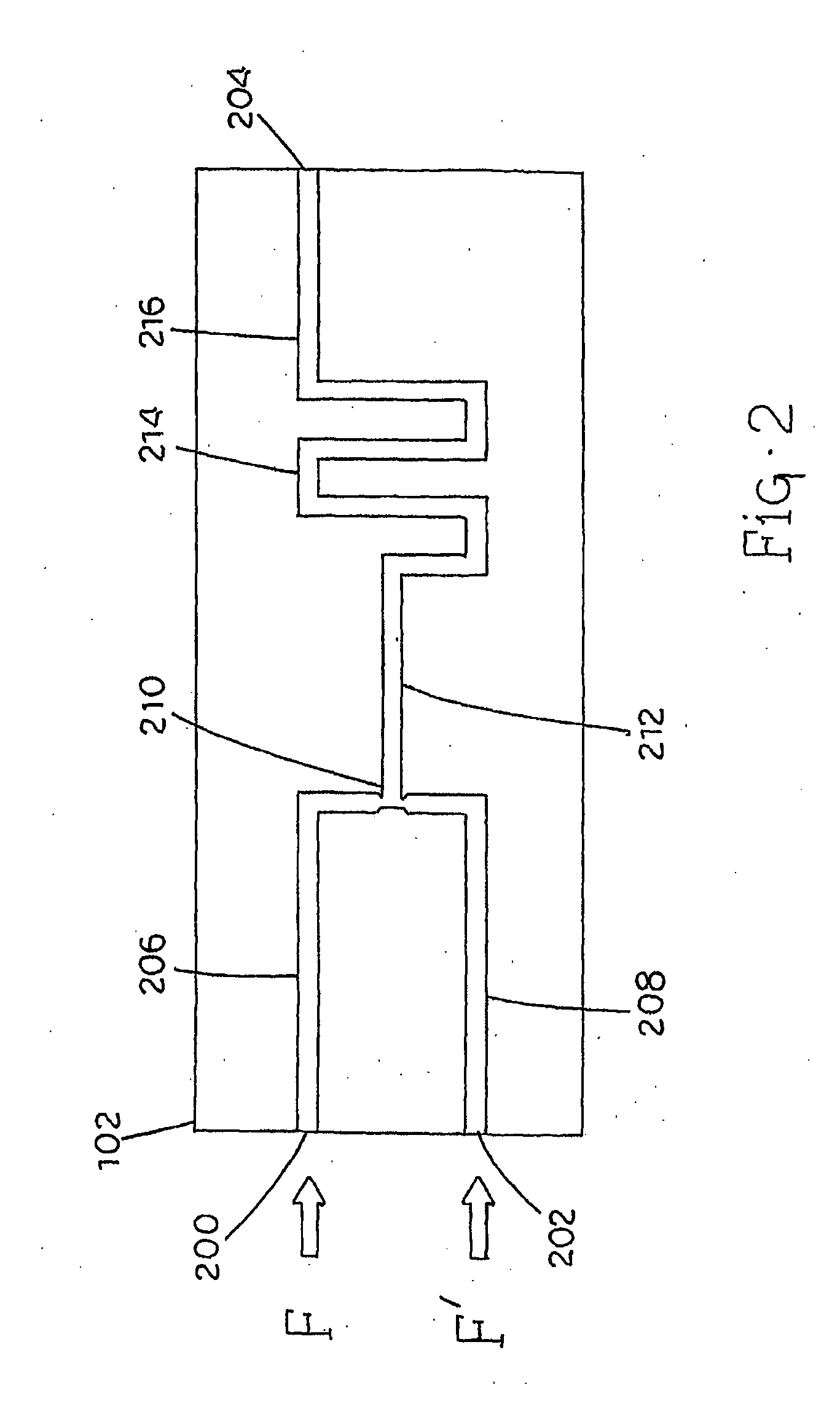Microfluidic systems, devices and methods for reducing noise generated by mechanical instabilities
a microfluidic system and mechanical instability technology, applied in the direction of positive displacement liquid engine, laboratory glassware, water supply installation, etc., can solve the problems of affecting the quality of data measured by the detection equipment downstream, changes in volume that alter the volumetric flow rate of the chip, and the effect of reducing the noise of concentration gradients
- Summary
- Abstract
- Description
- Claims
- Application Information
AI Technical Summary
Benefits of technology
Problems solved by technology
Method used
Image
Examples
Embodiment Construction
[0040]Microfluidic chips, systems, devices and related methods are described herein which incorporate improvements for reducing or eliminating noise in the fluid mix concentration. These microfluidic chips, systems, devices and methods are described with regard to the accompanying drawings. It should be appreciated that the drawings do not constitute limitations on the scope of the disclosed microfluidic chips, systems, and methods.
[0041]As used herein, the term “fluid” generally means any flowable medium such as liquid, gas, vapor, supercritical fluid, combinations thereof, or the ordinary meaning as understood by those of skill in the art.
[0042]As used herein, the term “vapor” generally means any fluid that can move and expand without restriction except for at a physical boundary such as a surface or wall, and thus can include a gas phase, a gas phase in combination with a liquid phase such as a droplet (e.g., steam), supercritical fluid, the like, or the ordinary meaning as under...
PUM
 Login to View More
Login to View More Abstract
Description
Claims
Application Information
 Login to View More
Login to View More - R&D
- Intellectual Property
- Life Sciences
- Materials
- Tech Scout
- Unparalleled Data Quality
- Higher Quality Content
- 60% Fewer Hallucinations
Browse by: Latest US Patents, China's latest patents, Technical Efficacy Thesaurus, Application Domain, Technology Topic, Popular Technical Reports.
© 2025 PatSnap. All rights reserved.Legal|Privacy policy|Modern Slavery Act Transparency Statement|Sitemap|About US| Contact US: help@patsnap.com



